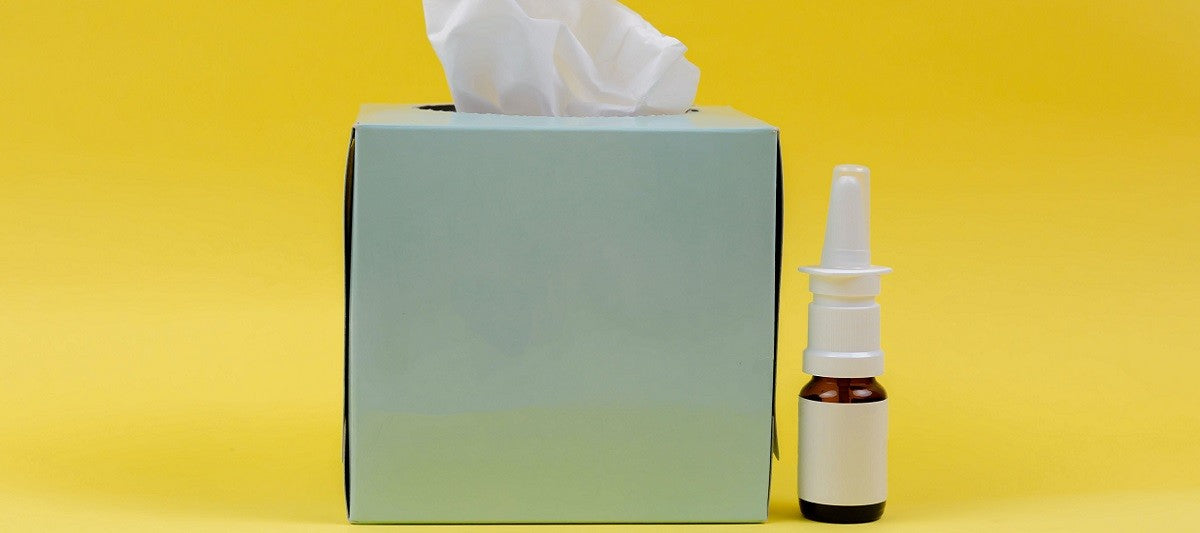While, technically, people can’t be allergic to air conditioning, an AC system can be the root cause of spreading polluted air. It’s not coincidental when flare-ups and symptoms increase once the system is turned on and if you haven’t recently serviced your air conditioner, it might be spreading allergens.
Both air conditioning and allergies will need to be addressed if you experience allergic symptoms each time your AC starts pushing cool air through your home. Your AC system is supposed to pull in air, filter it, cool it, and deliver it throughout your home. If your allergies flare-up when the AC comes on, this could be a strong sign that your system or air filter are dirty and are actually circulating contaminants instead of providing fresh, filtered air. Contrary to myth, you can’t get sick from the cool air of air conditioning, but it is very possible to get sick when you’re exposed to airborne bacteria and viruses that aren’t being removed by a good air filter.
AC Allergy Contaminants
There are a multitude of airborne irritants that can get trapped in dirty air ducts including:
- Mold
- Pollen
- Dust and dust mites
- Pet dander
- Outdoor pollutants
- Bacteria
- Airborne viruses
A dirty filter can hold those same airborne irritants, but when the filter is plugged with them it reduces air circulation and causes unnecessary wear and tear on the system fan motor because it must work harder to pull air through the dirty filter.
If you’re finding that people in your household are sensitive to air conditioning and are experiencing breathing problems, throat irritation, congested or runny noses, or sneezing and headaches, it might be a sign that AC allergy pollutants are being spread through your home. Consider these steps to address your indoor air issues:
- Check your air filter – is it dirty? When was the last time it was replaced? During high allergy season you can change an air filter every 4 to 12 weeks depending on the MERV rating. Upgrade to a MERV 13 for the most economical air filtration.
- Air ducts - Look at your air intake duct when you change your air filter, or, remove and check floor ducts to see if a layer of dust comes up when you wipe them. If so, it might be a sign that it’s time to hire an air duct cleaning service.
- AC unit health check – can’t remember last time you had an AC service? Is your AC cooling properly? How old is your system? It might be time for an inspection to check that your air conditioning isn’t causing issues related to unhealthy indoor air.
- Consider adding UVGI lighting – adding UVGI lights to shine on the AC system’ evaporator will keep the evaporator surface clean and free from biological growth.
- Consider indoor air quality testing – there are DIY kits and expert services that can assess your indoor air for the microscopic airborne pathogens related to respiratory issues. Just because people can’t see mold or dust mites, doesn’t mean these irritants aren’t lurking in your home.
- Invest in an air scrubber or purifier – these devices can improve air quality in the areas of your home where you spend the most time. By trapping pollutants, they can decrease symptoms for those who have more sensitive allergic reactions.
- Add a humidifier or dehumidifier – humidity levels can play a role in air conditioning and allergy symptoms because they can change the environment so certain pollutants can’t thrive. For example, mold needs humidity to thrive, adding a dehumidifier can lower moisture levels and so make it hard for mold to grow. Dehumidification from an AC may, in some special conditions, create a dry environment which can worsen irritated throats and noses and make a cough feel worse. Adding a humidifier can increase moisture levels to ease those symptoms.
- Wash your pets – if your animals are contributing to your allergies, consider upgrading to a higher MERV rating air filter and keep your pets (and their beds) clean. This will keep pet dander and hair at a minimum and prevent it from spreading around your home and within your AC system. If your air ducts haven’t been cleaned in years but you have pets, chances are there is a buildup of hair and pet dander in your ductwork—you never want a hair duct.
Working through these steps to determine whether you’re allergic to air conditioning pollutants and airborne pathogens should help ease uncomfortable symptoms. It may be impossible to combat all irritants and pollutants, especially when the outdoor air quality index shows high pollution levels in your area, but since AC units pull in air from within your home, you should be able to breathe easier indoors.
Related Blog Posts:
MERV MPR FPR Ratings
Can I Put Filters On My Air Vents Air Filters Delivered
Where Is My Furnace Filter Located
Actual Vs Nominal Size
Best Temperature For AC

